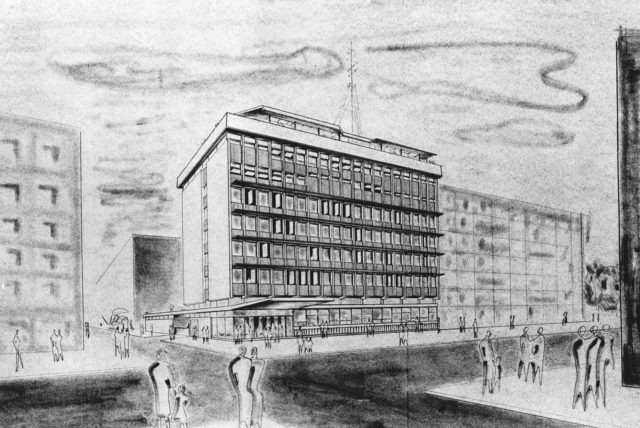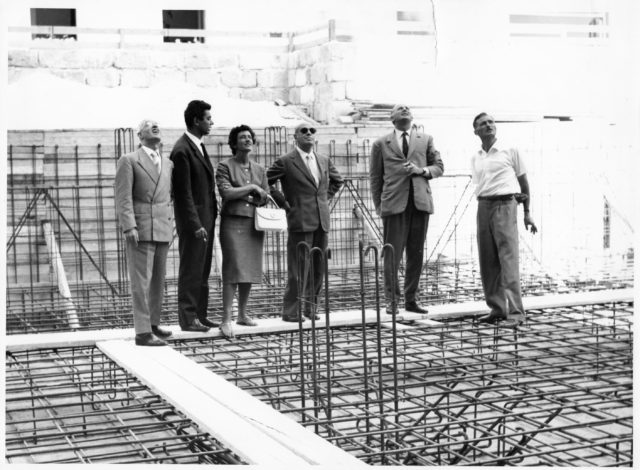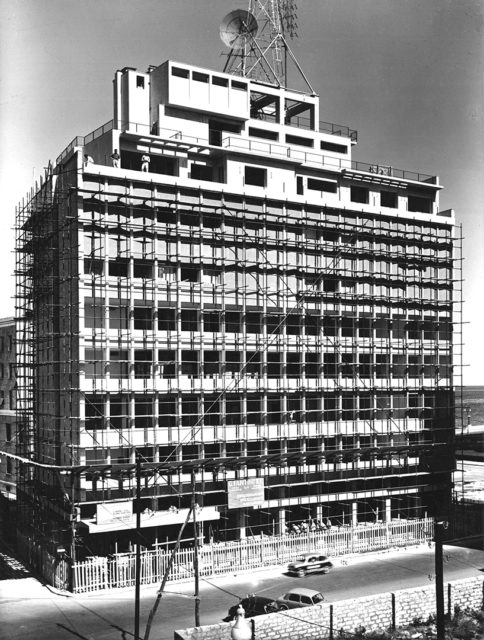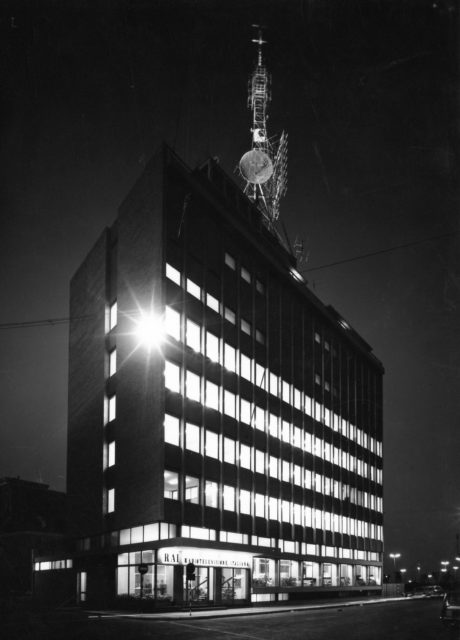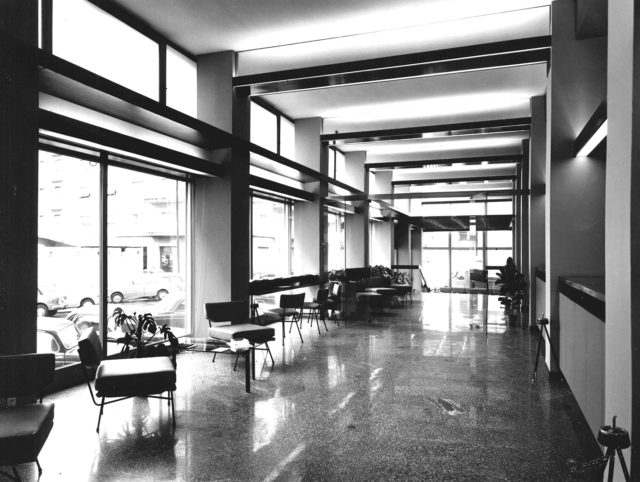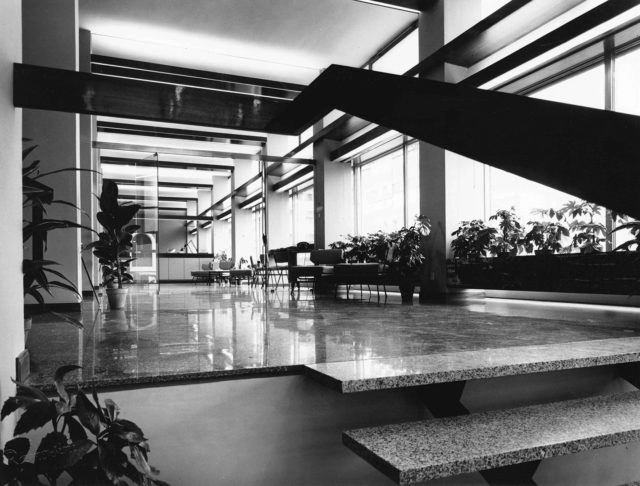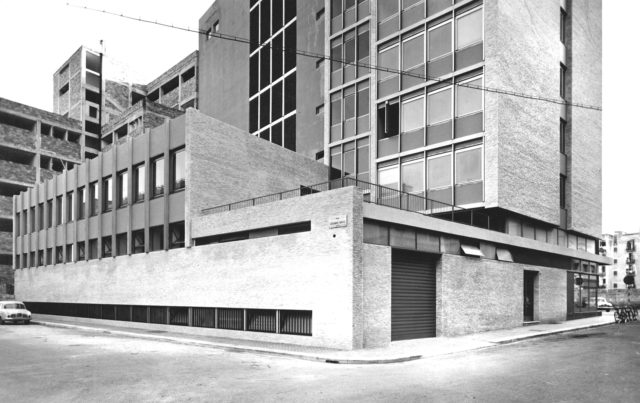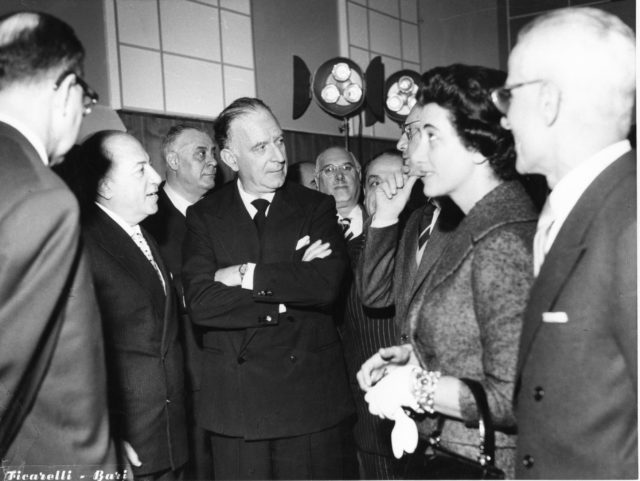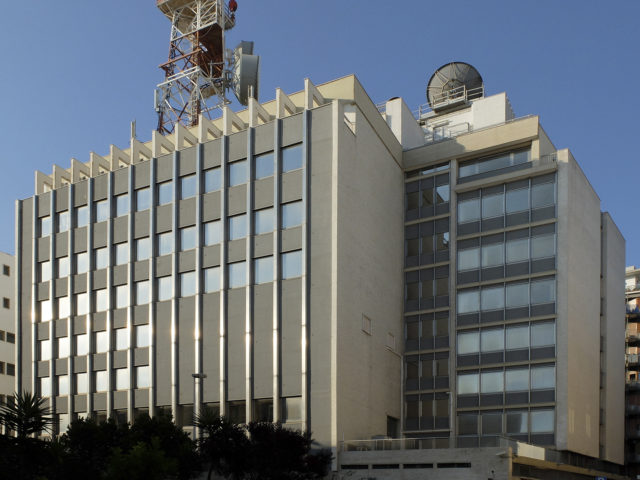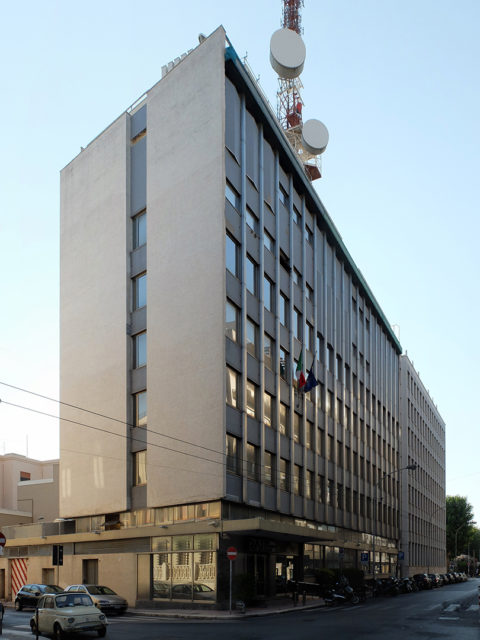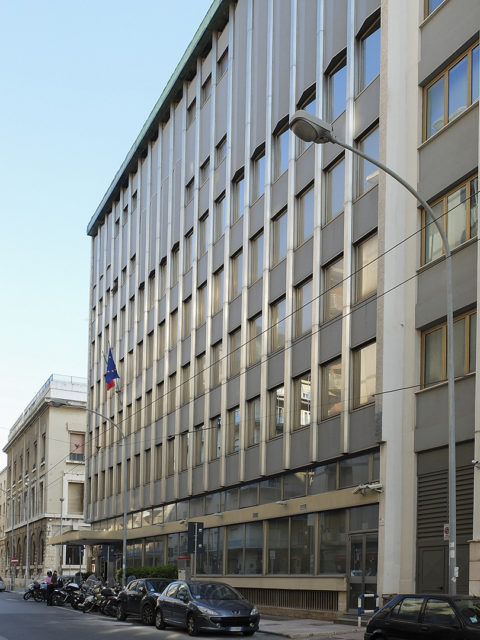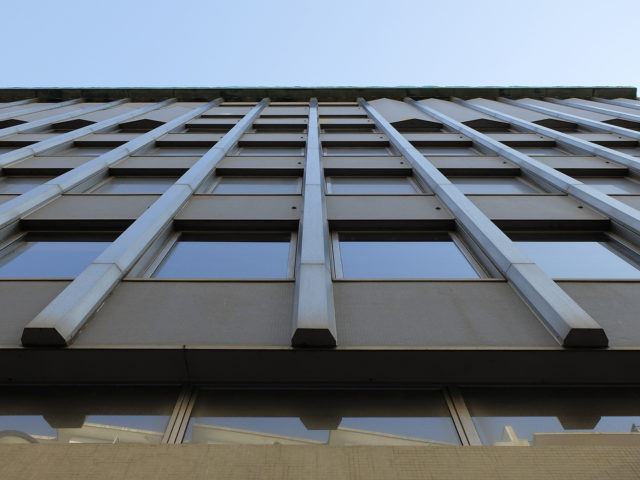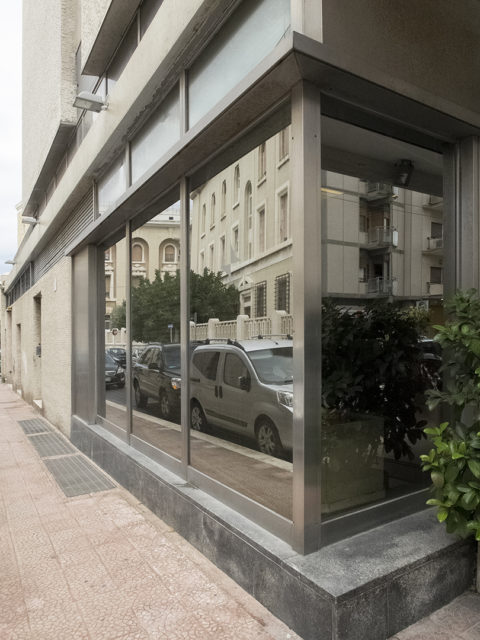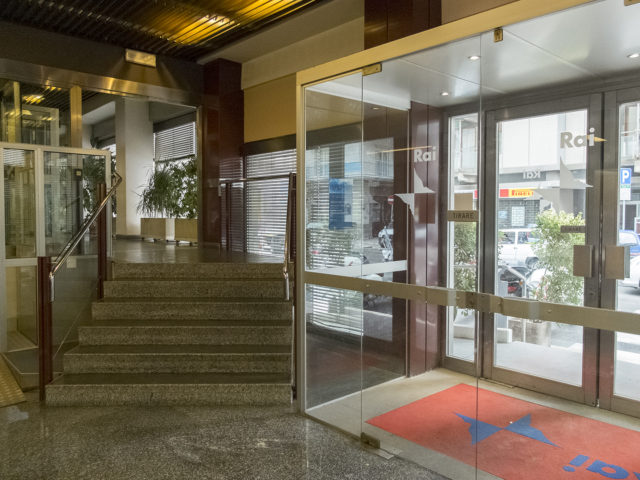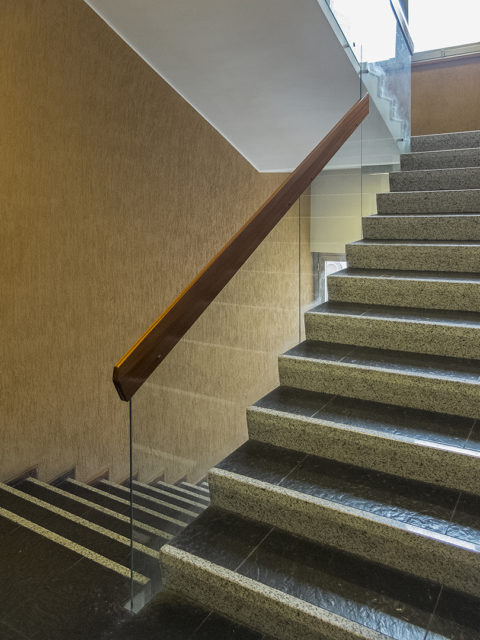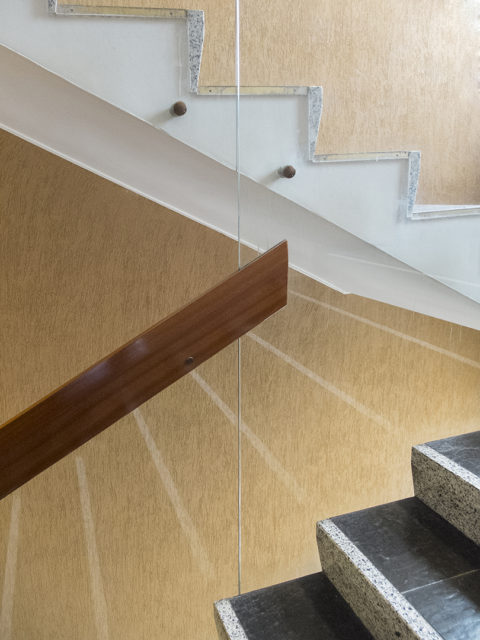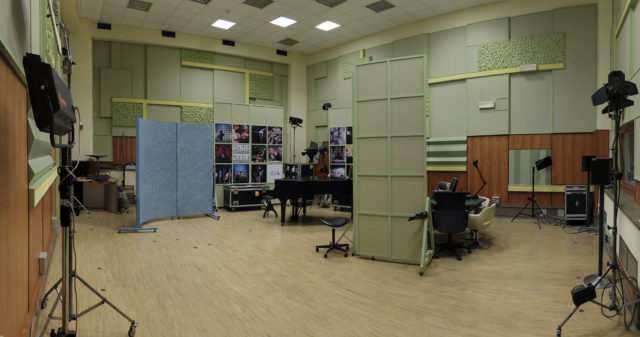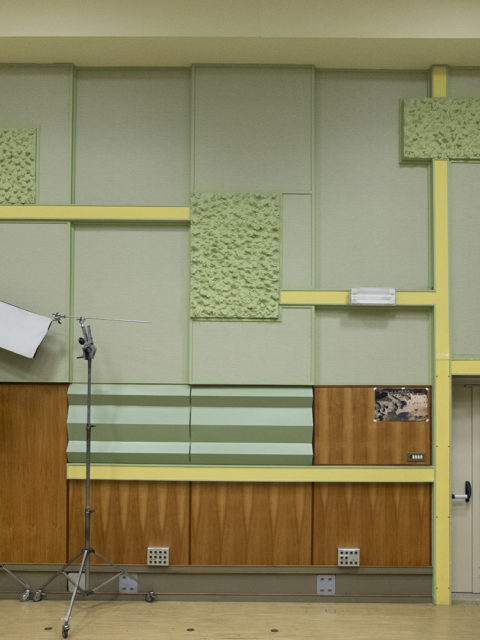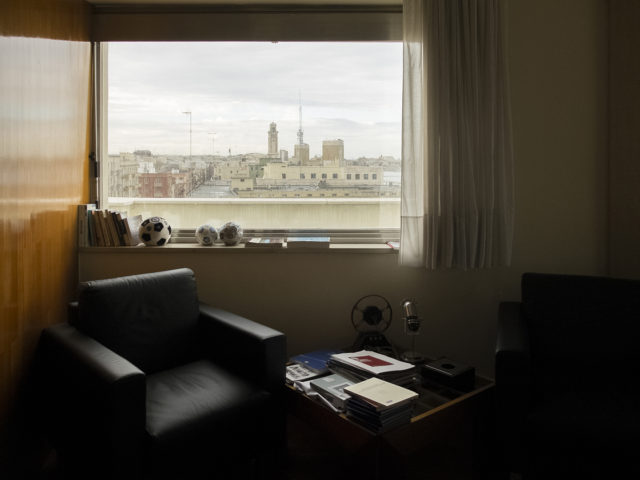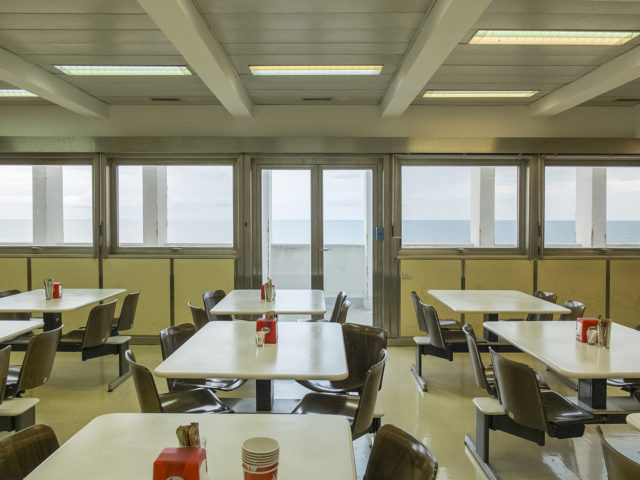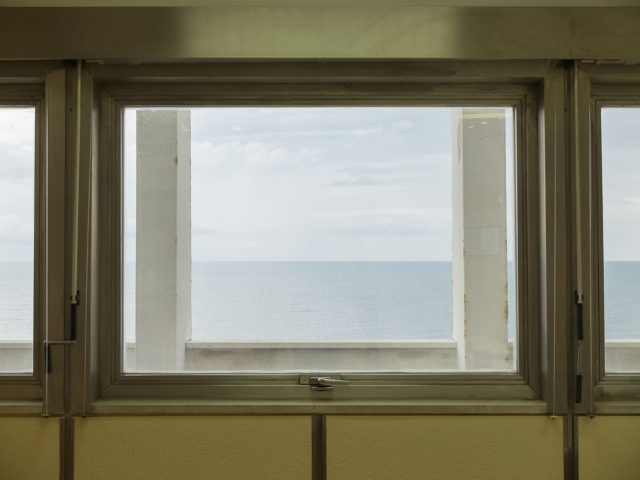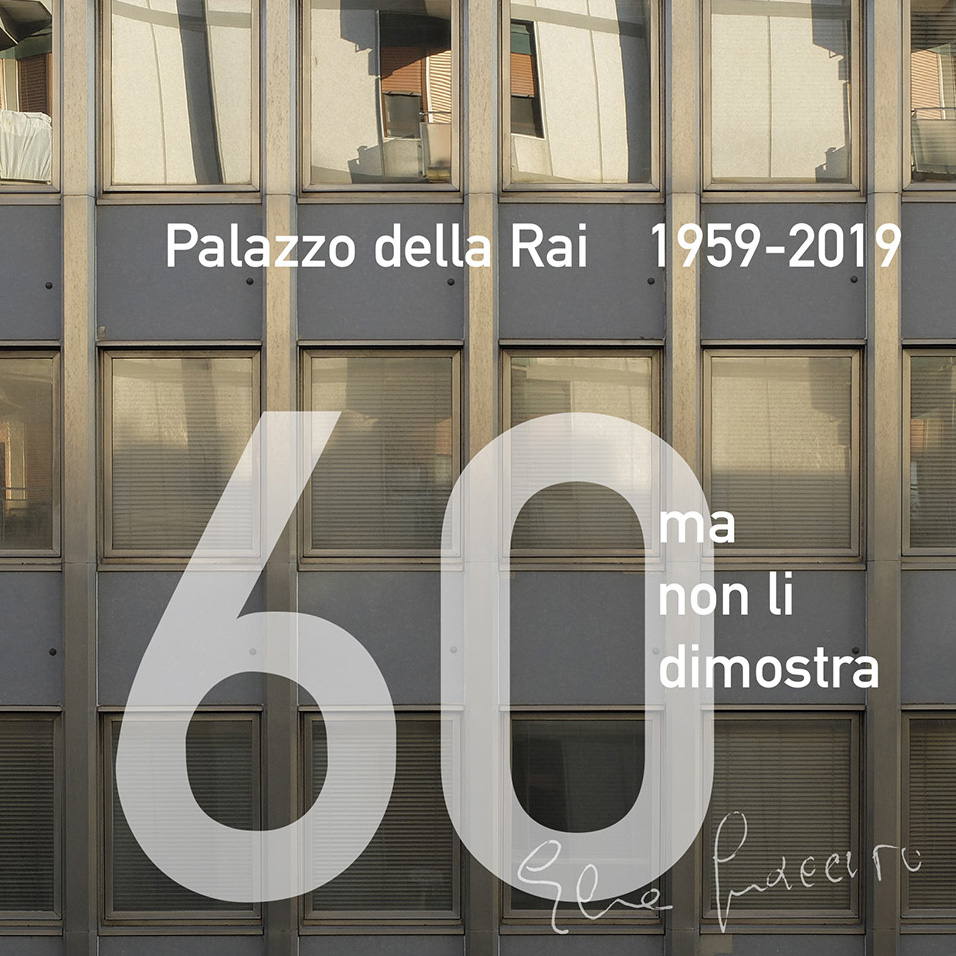
Palazzo della Rai, Bari
Inaugurated in 1959, the Palazzo della Rai di Bari is a building with a rationalist structure featuring numerous large windows that quickly earned it the nickname ‘the Building of a Hundred Windows’.
“The fundamental criterion is the perfect adherence of the building to its function”, stated Guaccero about her architectural approach. In order to house a special function such as that of a modern radio and television broadcasting centre, the architect chose to ‘play’ with light, giving glass and aluminium the leading role of the building. On the ground floor, which has windows all the way round it, a closed block is installed that houses, amongst other spaces, a 500-seat auditorium. As an article of the period states, “the attic will be reserved for inevitable extensions to the building”, confirming the long-term vision of the young architect, Elena Guaccero.
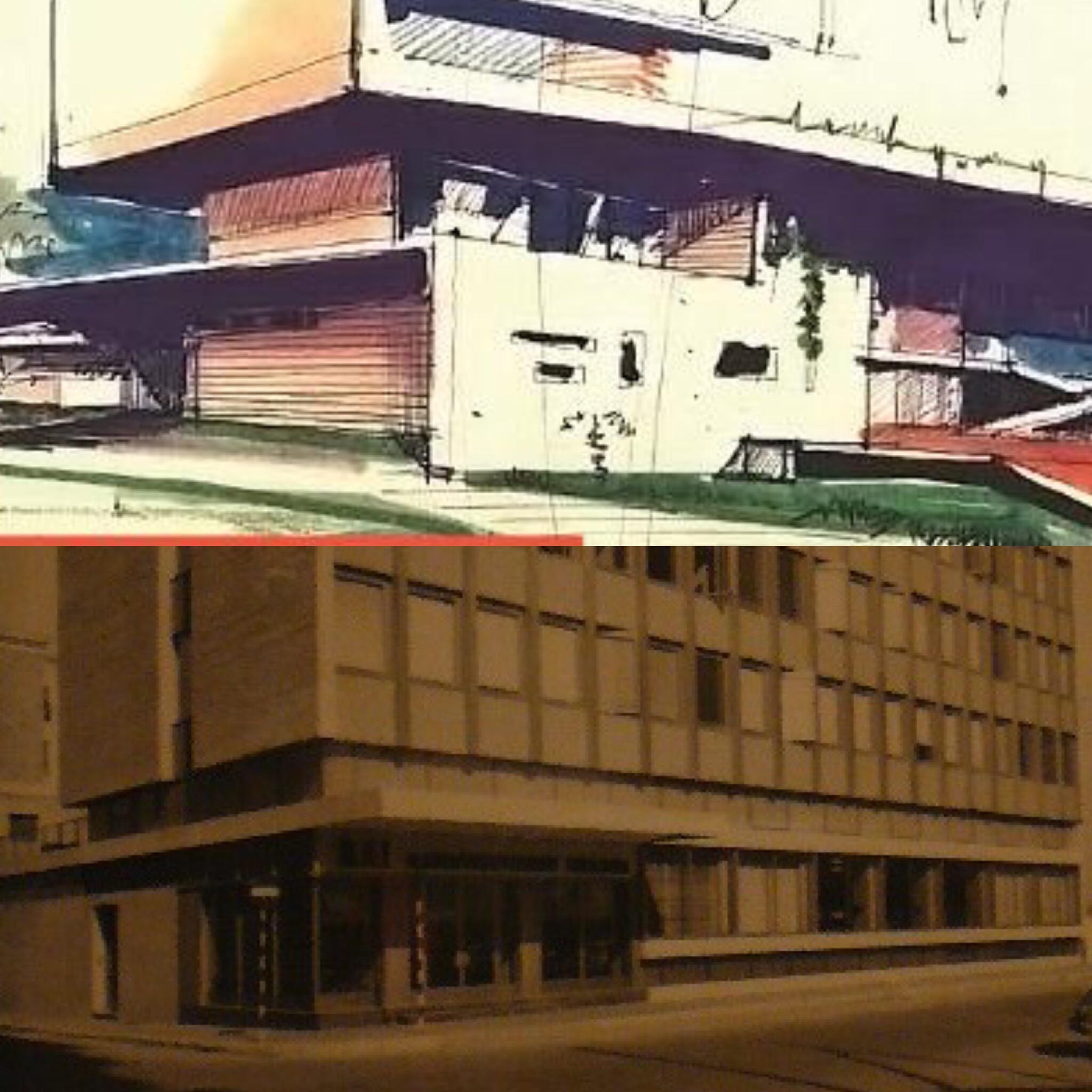
Elena. Massimo. Onofrio. Vittorio and Alfonso.
by Danilo Stefanelli
A few days ago, Onofrio Magnani passed away. He was an active architect during the ‘50s and ‘60s, a period sometimes referred to as “the long war”. These decades are defined by profound architectural and urban transformations that have been criticised for their depletion of the historic built fabric of many cities. In this period of burgeoning professional opportunities, little time was reserved to study the effects of these new architectural forms and compositions, to the detriment of our urban realm. But not all architects are equal; during this war there were also “heroic” protagonists who did not subscribe to the principle of maximising land exploitation. Onofrio Mangini was among these “heroes”, together with others such as Vittorio Chiaia, Massimo Napolitano, Vito Sangirardi, Alfonso Chiaia, Elena Guaccero. This generation of architects, engineers and builders provided us with memorable projects that still serve as key reference points for many professionals today.
